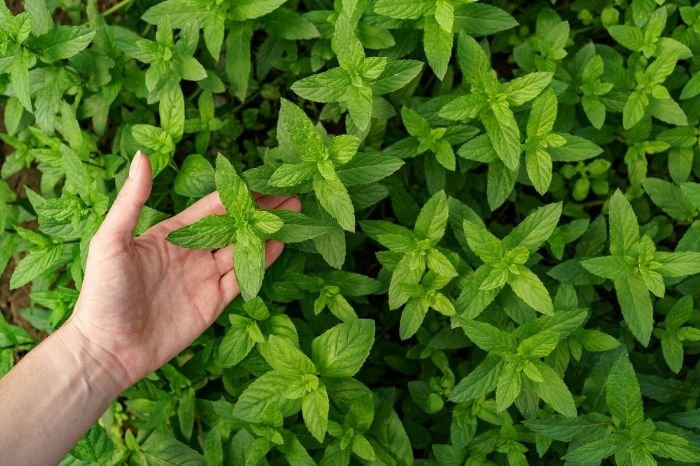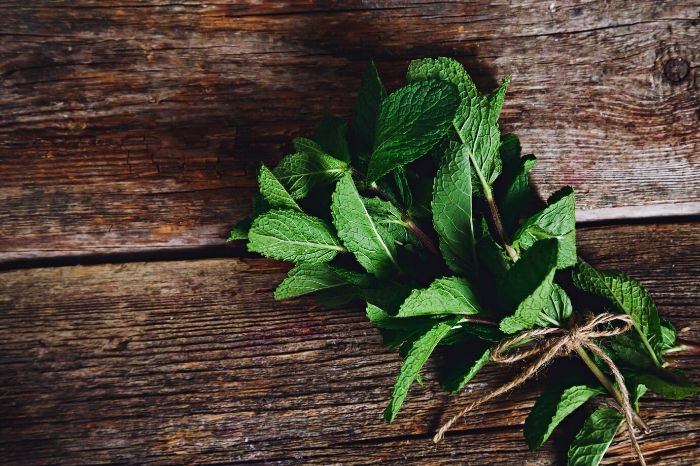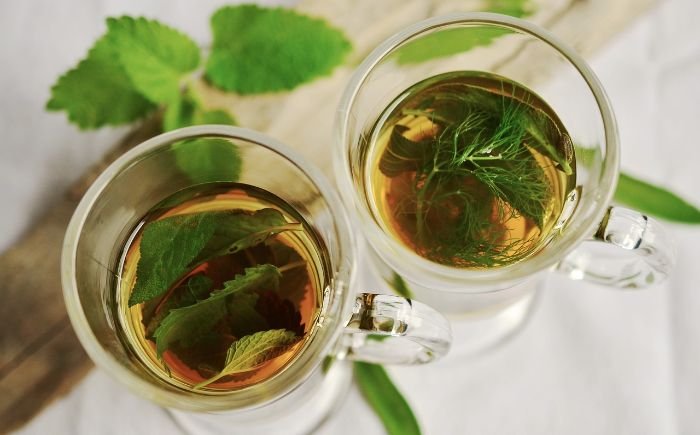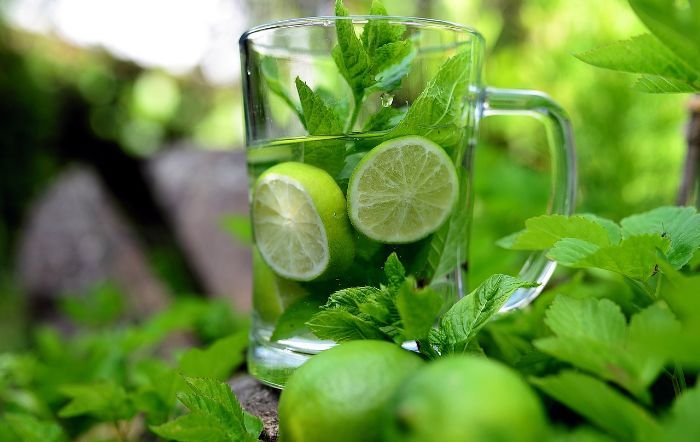Mint is one of the most diverse and vigorous herbs in the garden. With over a dozen popular varieties, each offering distinct flavors, scents, and growth patterns, mint plays a key role in cooking, herbal medicine, companion planting, and even pest control. From the sharp menthol of peppermint to the fruity notes of apple mint and the soothing lemon balm, identifying the right type of mint for your needs is crucial. In this guide, we’ll break down the main categories of mint, how to recognize them, and what to expect from their growth behavior.
Key Takeaways:
- There are many types of mint, each with unique flavor profiles, leaf shapes, and aromatic qualities.
- Popular mint varieties include peppermint, spearmint, apple mint, chocolate mint, and lemon balm.
- Proper identification of mint types helps with cultivation, companion planting, and culinary use.
- Mint spreads aggressively through underground rhizomes and requires containment strategies.
- Successful mint growth depends on well-drained soil, partial sunlight, regular watering, and temperature control.
Table of Contents
What Makes Mint a Valuable Herb
Mint belongs to the Mentha genus and includes a wide range of aromatic perennials known for their vigorous growth and essential oil content. With a distinct balance of cooling and sweet notes, mint plays a multifaceted role in culinary, medicinal, and horticultural practices. Its leaves are rich in menthol and other volatile compounds, making them highly effective in food, teas, cosmetics, and herbal remedies.
Why Mint Is a Staple in Home Gardens
Mint is one of the most commonly grown herbs due to its resilience, rapid growth, and wide-ranging applications. It thrives in various climates, tolerates partial shade, and grows vigorously with minimal care.
Once established, mint produces a continuous harvest of fresh leaves throughout the growing season. Its culinary versatility, paired with natural pest-repelling properties, makes it an ideal herb for both novice and experienced gardeners.
Mint in History and Cuisine
The use of mint dates back to ancient civilizations, including Egypt, Greece, and Rome, where it was valued for its digestive and antiseptic properties. Historical texts describe mint being used in herbal infusions, ritual offerings, and medicinal balms. Over time, it became a culinary staple across cultures, especially in Middle Eastern, Mediterranean, and South Asian cuisines.
Today, mint is widely used in sauces, chutneys, cocktails, and herbal teas across many culinary traditions.
Main Types of Mint and Their Distinct Characteristics
There are dozens of mint varieties, but a few stand out for their widespread cultivation, distinct aromas, and culinary or medicinal value. Below are the most commonly grown types of mint, along with their unique traits and practical uses:
Peppermint (Mentha × piperita)
Peppermint is a natural hybrid between spearmint and watermint, known for its high menthol content and intense cooling sensation. The dark green leaves and purple stems are easily recognizable. It’s commonly used in teas, digestive remedies, confections, and essential oils for its strong, sharp flavor.
Spearmint (Mentha spicata)
Spearmint features a milder, sweeter taste with lower menthol levels, making it ideal for cooking and beverages. Its spear-shaped, bright green leaves are widely used in Mediterranean dishes, sauces like tzatziki, and fresh drinks such as mojitos.
Apple Mint (Mentha suaveolens)
Also known as woolly mint, this variety has soft, fuzzy leaves and a subtle apple-like aroma. It works well in fruit salads, jellies, and herbal teas. Apple mint is also popular for ornamental purposes due to its attractive texture and rounded growth habit.
Chocolate Mint (Mentha × piperita ‘Chocolate’)
A cultivar of peppermint, chocolate mint offers a unique blend of mint and cocoa-like scent. It’s favored for desserts, flavored drinks, and baking. The slightly bronzed leaves and rich aroma make it a standout in both edible and decorative plantings.
Lemon Balm (Melissa officinalis)
Though not a true mint botanically, lemon balm is part of the Lamiaceae family and often grouped with mint varieties due to its similar growth and care requirements. It carries a strong lemon fragrance and is frequently used in calming herbal infusions, culinary dishes, and aromatherapy.
Each of these mint varieties brings a distinctive combination of aroma and flavor – ranging from sharp menthol to fruity or citrusy undertones. Whether added to food, brewed into tea, or used for their soothing properties, these mints offer both practical value and sensory appeal in everyday life.
How Mint Grows – Spreading Habits and Containment Strategies
Mint is known for its aggressive growth and tendency to spread via underground rhizomes – horizontal stems that produce new shoots and roots at intervals. This growth mechanism allows mint to colonize large areas rapidly, often outcompeting neighboring plants.
To manage its invasiveness, gardeners commonly grow mint in containers or confined beds. Raised beds with root barriers or pots sunk into the ground are effective methods for controlling its spread. Installing vertical underground barriers around planting zones prevents rhizomes from escaping and invading adjacent areas.
Understanding the vertical and lateral growth patterns of specific mint types also helps with garden planning. Some varieties grow tall and upright, while others sprawl outward.
This knowledge allows for better placement, companion pairing, and long-term control without the need for constant pruning.

Characteristics of Different Mint Types
With so many mint varieties available, recognizing their visual and aromatic traits is key to selecting the right one for your needs. Below are the most important features used to identify and compare mint types, including leaf morphology, fragrance profiles, and seasonal changes.
Leaf Shape, Color, and Texture
Mint leaves vary widely in shape and texture, depending on the cultivar. Some varieties feature broad, rounded leaves, while others develop narrow or lance-shaped foliage. Color ranges from bright green to deep emerald, often with variegated patterns of white, yellow, or purple. Leaf texture can be smooth, fuzzy, or deeply veined – features that not only influence appearance but also hint at flavor intensity and oil content.
Distinctive Aromas and Flavors
The aroma and flavor profiles of mint varieties are shaped by their essential oil composition, particularly the levels of menthol, carvone, and other volatile compounds. Peppermint, for example, has a high menthol concentration, delivering a sharp, cooling sensation ideal for teas and medicinal uses. In contrast, spearmint contains more carvone, giving it a milder, sweeter taste suited for savory dishes and cocktails.
Other varieties exhibit complex notes – apple mint carries a fruity aroma, chocolate mint has subtle cocoa undertones, and lemon balm offers a citrusy scent. These differences are more than sensory; they guide how each variety is best used in culinary and therapeutic contexts.
Flowering Habits and Seasonal Changes
Mint plants typically produce clusters of small tubular flowers in shades of white, pale pink, or lavender. Flowering usually occurs from late spring to midsummer, though the exact timing depends on the variety and growing conditions. While flowering reduces leaf production and essential oil concentration, it adds ornamental value and attracts pollinators such as bees and butterflies.
Seasonally, mint growth accelerates in mild spring temperatures, peaks in early summer, and slows or dies back in colder months. In frost-prone regions, many mint species enter dormancy or die back to their rhizomes, resprouting once temperatures rise.
Optimal Growing Conditions for Mint
To cultivate vigorous, aromatic mint plants, it’s essential to provide the right growing environment. Mint thrives in fertile, well-draining soil, consistent moisture, and moderate temperatures. Understanding these conditions ensures healthy growth, higher leaf yield, and stronger flavor and aroma profiles.
Soil Requirements and Preparation
Mint prefers rich, loamy soil with excellent drainage and high organic matter content. The ideal pH ranges from 6.0 to 7.0. Before planting, amend the soil with compost, aged manure, or leaf mold to improve nutrient availability and moisture retention. Avoid heavy clay soils that retain excess water, as they can lead to root rot. Raised beds or containers with drainage holes are effective for controlling both soil quality and root spread.
Light and Water Needs
Mint grows best in locations that receive 4 to 6 hours of sunlight daily. While it tolerates partial shade, full sun exposure enhances essential oil production and leaf density. Consistent moisture is critical – soil should be kept evenly moist but never waterlogged. During dry or hot weather, increase watering frequency and consider mulching around the base to retain soil moisture and regulate temperature.
Temperature and Climate Considerations
Mint performs best in moderate climates with daytime temperatures between 60°F and 70°F (15°C to 21°C). Excessive heat can stress the plant and reduce leaf quality, while frost can damage or kill top growth. In hot climates, provide afternoon shade and maintain soil moisture with organic mulch. In colder regions, cover garden mint with straw for insulation or overwinter potted plants indoors near a bright window.
Creating optimal growing conditions is the foundation for vigorous, high-yielding mint. When provided with the right soil structure, adequate sunlight, consistent moisture, and climate-appropriate care, mint plants will produce abundant, flavorful leaves suitable for culinary, medicinal, and ornamental use.
How to Plant, Prune, and Maintain Healthy Mint
Successful mint cultivation requires more than just suitable conditions – it also depends on proper planting techniques, routine pruning, and proactive pest and disease management. These practices ensure sustained growth, maintain plant vigor, and prevent mint from becoming invasive or weak over time.
Planting Mint – Location, Spacing, and Soil Preparation
Mint should be planted in a location with partial sun to full sunlight and loose, well-draining soil rich in organic matter. Before planting, remove weeds and incorporate compost or aged manure to improve fertility and texture. Whether planting in the ground or containers, allow at least 18 to 24 inches between plants to prevent overcrowding and ensure adequate airflow. In-ground plantings should be monitored closely or grown in bottomless containers to limit root spread.
Pruning and Harvesting Mint for Continued Growth
Keeping mint plants trimmed helps them grow better. Trim the mint to keep it neat and stop it from taking over. Cut mint for use from the top down. This way, you’ll always have fresh mint for cooking or other uses.

Protecting Mint from Pests and Fungal Diseases
Although mint is relatively pest-resistant, it can still attract aphids, spider mites, and flea beetles. Natural deterrents like neem oil, insecticidal soap, or introducing beneficial insects (e.g. ladybugs) are effective in controlling outbreaks. Mint is also prone to fungal issues such as powdery mildew and rust, especially in humid conditions. Prevent disease by maintaining good airflow, avoiding overhead watering, and removing infected leaves promptly. Sanitize tools and thin dense growth to reduce fungal spread.
Practical Uses of Mint – Culinary, Medicinal, and Ecological
Mint serves multiple roles beyond flavoring food – it’s a versatile herb with culinary, medicinal, and ecological value. Whether you’re enhancing a dish, supporting digestion, or repelling pests, mint offers practical benefits that make it a valuable addition to both kitchens and gardens.
Culinary Uses – From Fresh Garnishes to Complex Recipes
Mint is widely used in both sweet and savory dishes due to its refreshing flavor and aromatic complexity. It pairs well with lamb, legumes, citrus, and chocolate, and is a staple in cuisines across the Middle East, South Asia, and the Mediterranean. Popular culinary uses include mint chutneys, tzatziki, mojitos, fruit salads, infused oils, and herbal teas. Fresh leaves are best added at the end of cooking to preserve their volatile oils, while dried mint can be used in marinades and spice blends.

Medicinal Benefits – Digestion, Headaches, and Respiratory Relief
Mint has long been used in herbal medicine for its antispasmodic, carminative, and mild analgesic properties. Peppermint tea is commonly used to relieve digestive discomfort, bloating, and nausea. Menthol, a primary compound in peppermint, acts as a natural decongestant and can soothe headaches and respiratory issues. Topical mint oil is also used in balms and rubs for muscle relief and sinus clearing. While generally safe, concentrated oils should be used with care, especially in children or sensitive individuals.
Natural Pest Repellent – Protecting Spaces with Mint
Mint contains strong aromatic compounds, including menthol and pulegone, which naturally repel pests such as ants, mosquitoes, aphids, and flea beetles. Planting mint along garden borders or near vulnerable crops can help reduce pest pressure without the need for synthetic sprays. Indoors, dried mint sachets or crushed fresh leaves placed near entry points may deter insects. However, due to its invasive growth, outdoor mint should be confined to containers or root-barrier beds.
Mint’s applications extend far beyond the culinary realm. From relieving physical ailments to acting as a natural insect deterrent, its range of uses makes it one of the most functional and adaptable herbs in the home and garden. Understanding these roles allows gardeners and cooks alike to make full use of mint’s potential.
Using Mint as a Companion Plant – Benefits and Best Pairings
Beyond its culinary appeal, mint is highly effective as a companion plant. Its strong aroma deters many common pests, while its flowers attract pollinators and predator insects. When paired with compatible herbs and flowers, mint contributes to healthier plant communities and more resilient garden systems through aromatic plants in companion planting.
Best Plants to Grow with Mint – Compatible Herbs and Flowers
Several herbs and flowering plants complement mint’s growth habits and enhance its natural pest-repelling properties:
- Lavender – Prefers similar growing conditions and helps repel moths and fleas, while attracting pollinators.
- Marigold – Produces compounds that deter nematodes and draws beneficial insects like ladybugs and hoverflies.
- Chamomile – Attracts pollinators and may improve the health of nearby plants through mild antifungal properties.
- Basil – Shares sun and moisture preferences with mint and helps deter aphids and mosquitoes when planted nearby.
How Mint Improves Garden Ecosystems
Mint contributes to a balanced and productive garden ecosystem through several mechanisms:
- Natural Pest Control – Its aromatic compounds deter ants, aphids, flea beetles, and other soft-bodied pests.
- Pollinator Support – Flowering mint, especially when paired with lavender or marigold, attracts bees, hoverflies, and other beneficial insects.
- Soil Structure Enhancement – The root system aerates compacted soil and contributes organic material as older roots decompose, improving nutrient flow and microbial activity.
Integrating mint with the right companion plants supports a more balanced and productive garden. Its natural defenses reduce the need for chemical treatments, while its interactions with soil and insects contribute to long-term plant health and sustainable cultivation practices.
Conclusion – Why Mint Deserves a Place in Every Garden
Mint stands out as one of the most multifunctional herbs a gardener can grow. Its broad range of varieties offers distinctive flavors and aromas suited for culinary, medicinal, and aromatic applications. With the right planting and care techniques, mint delivers consistent harvests and minimal maintenance.
Beyond the kitchen, its natural pest-repelling properties and ability to enhance soil quality make it an asset in organic and companion gardening systems. Whether you’re growing mint for its taste, therapeutic value, or ecological benefits, it’s a reliable and rewarding addition to any outdoor space.
Mint Questions Answered – Identification, Growth, and Practical Uses
What are the most common types of mint and how do they differ?
The most common mint varieties include peppermint, spearmint, apple mint, chocolate mint, and lemon balm. They differ in flavor strength, leaf shape, aroma profile, and menthol content. Peppermint is high in menthol and sharp in taste, while spearmint is milder and sweeter. Apple mint has a fruity scent, and chocolate mint combines minty and cocoa notes.
How can I identify different mint varieties in my garden?
Mint varieties can be identified by their leaf shape, color, scent, and stem color. For example, peppermint has dark green, pointed leaves and purple stems, while spearmint has bright green, spear-shaped leaves and a mild fragrance. Crushing a leaf between your fingers is often the best way to distinguish between types.
Does mint need full sun or partial shade to grow well?
Mint grows best in partial to full sun, ideally receiving 4 to 6 hours of sunlight daily. Full sun enhances flavor and oil production, but in very hot climates, partial shade helps prevent stress and wilting.
What is the best way to prevent mint from spreading too much?
To control mint’s aggressive spread, grow it in containers or raised beds with root barriers. If planting in open soil, install vertical barriers at least 12 inches deep to stop rhizomes from invading surrounding areas.
When and how should I prune mint for best growth?
Prune mint regularly during the growing season to promote bushier growth and prevent flowering. Trim the top third of the stems just above a leaf node. Avoid letting the plant flower if your goal is high leaf yield and strong flavor.
Is mint safe to plant with vegetables and other herbs?
Yes, mint can be a beneficial companion plant for vegetables like cabbage, kale, and tomatoes due to its pest-repelling properties. However, it’s important to isolate mint roots or grow it in containers to prevent it from overtaking nearby plants.
Can I use mint indoors or on a windowsill?
Mint grows well indoors with sufficient light – preferably 4–6 hours of direct sun or a grow light. Use a deep container with good drainage and harvest regularly to keep the plant compact and productive.
What are the main uses of mint beyond cooking?
Beyond culinary use, mint supports digestion, relieves mild headaches, clears nasal passages, and repels insects. It’s used in teas, balms, aromatherapy, and natural pest control both indoors and in gardens.










